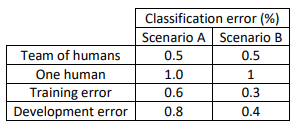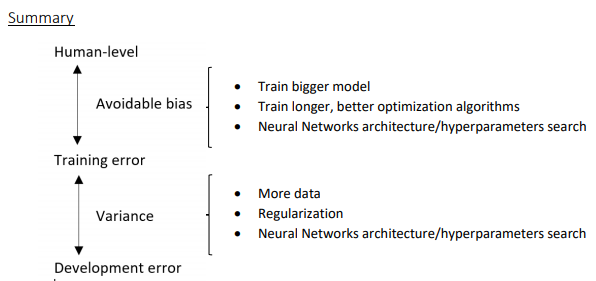Surpassing human-level performance
Example1: Classification task

Scenario A In this case, the Bayes error is 0.5%, therefore the available bias is 0.1% et the variance is 0.2%.
Scenario B In this case, there is not enough information to know if bias reduction or variance reduction has to be done on the algorithm. It doesn’t mean that the model cannot be improve, it means that the conventional ways to know if bias reduction or variance reduction are not working in this case.
There are many problems where machine learning significantly surpasses human-level performance, especially with structured data:
Online advertising
Product recommendations
Logistics (predicting transit time)
Loan approvals
Improving your model performance
The two fundamental assumptions of supervised learning There are 2 fundamental assumptions of supervised learning.
The first one is to have a low avoidable bias which means that the training set fits well.
The second one is to have a low or acceptable variance which means that the training set performance generalizes well to the development set and test set.
If the difference between human-level error and the training error is bigger than the difference between the training error and the development error, the focus should be on bias reduction technique which are training a bigger model, training longer or change the neural networks architecture or try various hyperparameters search.
If the difference between training error and the development error is bigger than the difference between the human-level error and the training error, the focus should be on variance reduction technique which are bigger data set, regularization or change the neural networks architecture or try various hyperparameters search.
